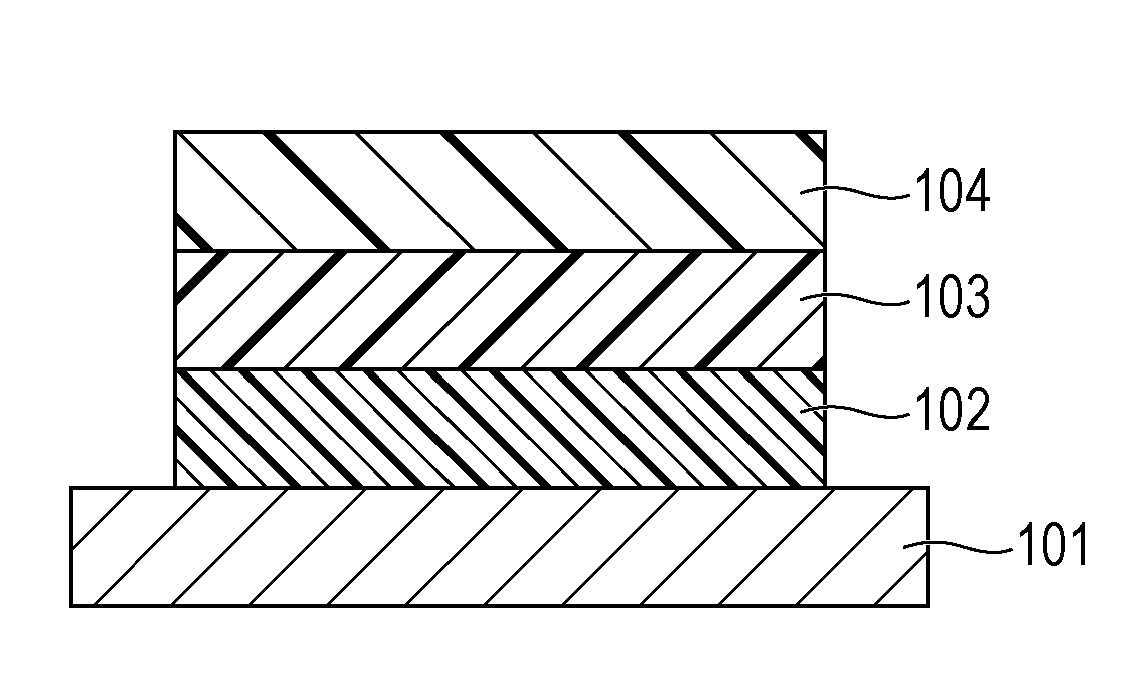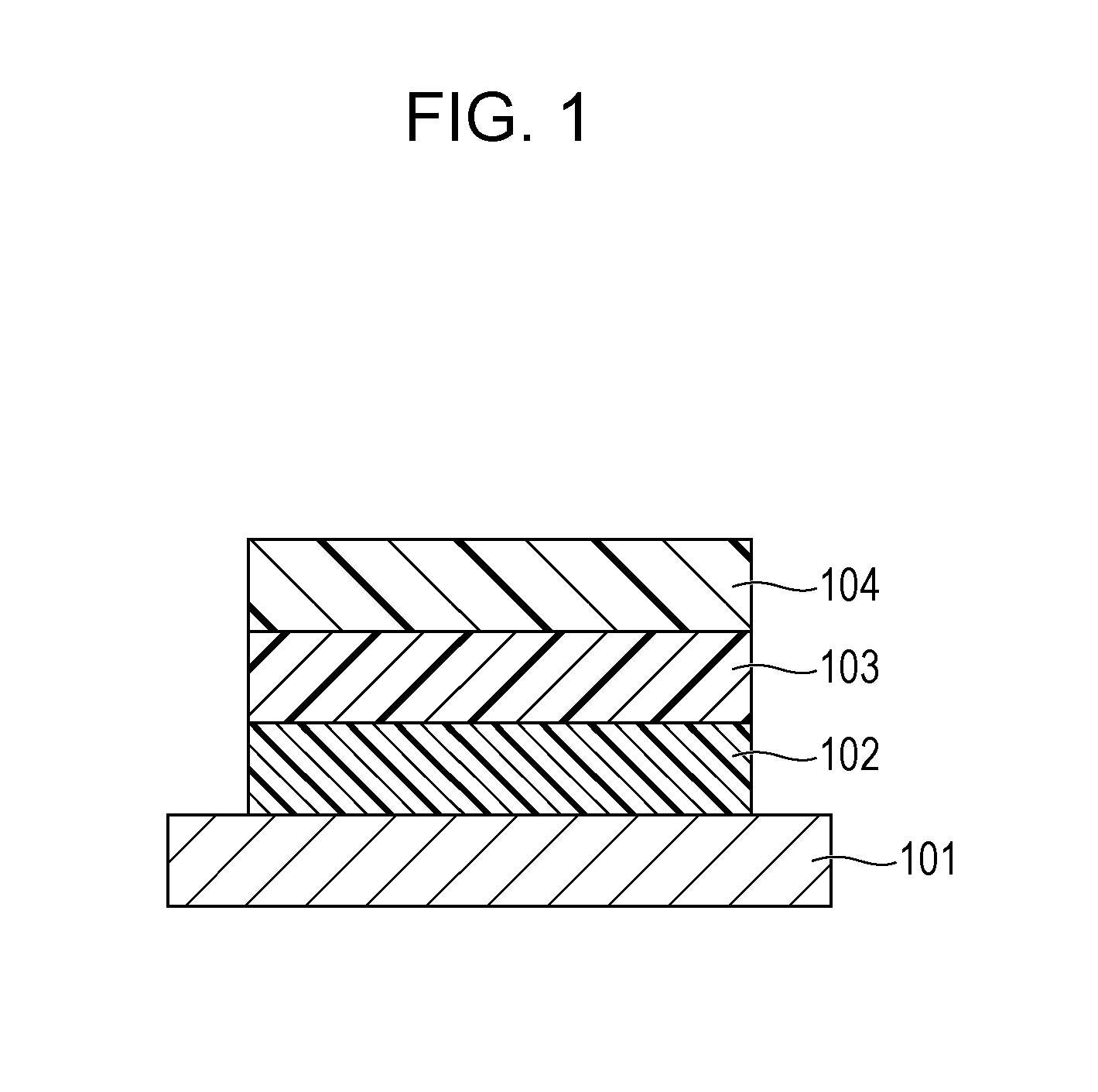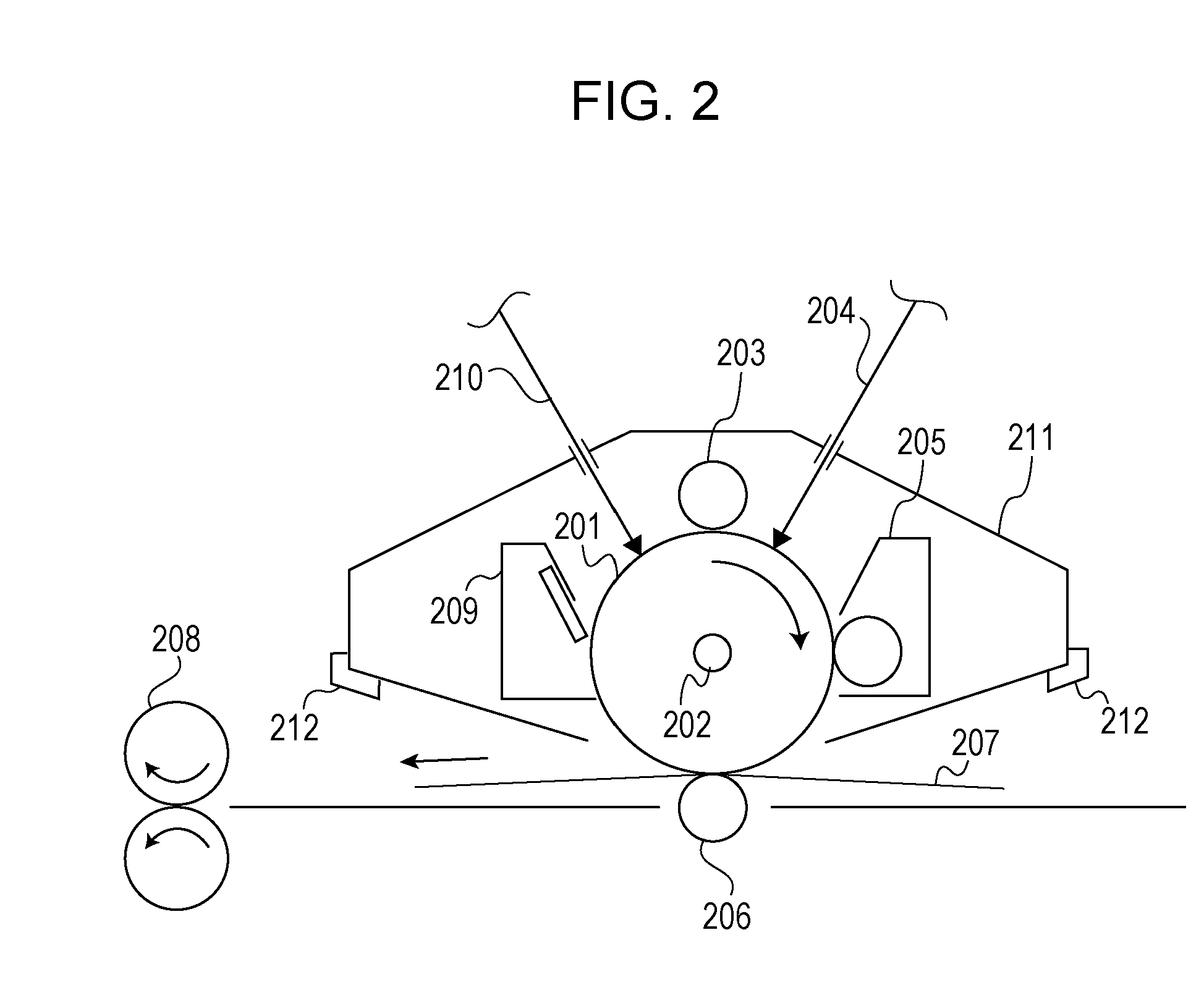Electrophotographic photosensitive member, method for manufacturing electrophotographic photosensitive member, process cartridge, and electrophotographic apparatus
a photosensitive member and electrophotography technology, applied in the field of electrophotographic photosensitive members, can solve the problems of increasing the particle size of the charge-generating layer coating liquid, insufficient to achieve the reduction of ghost image and black-spot image,
- Summary
- Abstract
- Description
- Claims
- Application Information
AI Technical Summary
Benefits of technology
Problems solved by technology
Method used
Image
Examples
example 1
[0073]An aluminum cylinder having a diameter of 24 mm and a length of 257 mm (JIS-A 3003, aluminum alloy) was used as a support (cylindrical support).
[0074]A solution composed of the components shown in Table 1 was subjected to dispersion for approximately 20 hours in a ball mill to prepare a coating liquid for a conductive layer.
TABLE 1Powder of barium sulfate particles having layer coated with60partstin oxide (trade name: Passtran PC1, manufactured byMITSUI MINING & SMELTING CO., LTD.)Titanium oxide15parts(trade name: TITANIX JR, manufactured by TaycaCorporation)Resol-type phenolic resin43parts(trade name: PHENOLITE J-325, manufactured by DICCorporation, solid content 70 mass %)Silicone oil0.015parts(trade name: SH28PA, Dow Corning Toray Co., Ltd.)Silicone resin3.6parts(trade name: TOSPEARL 120, Momentive PerformanceMaterials Inc.)2-methoxy-1-propanol50partsMethanol50parts
[0075]The coating liquid for a conductive layer, which had been prepared in this manner, was applied onto the ...
synthetic example 1
[0077]Under a nitrogen atmosphere, 72 parts of o-phthalonitrile, 25 parts of gallium trichloride, and 350 parts of quinoline were allowed to react with each other at 200° C. for 4 hours, and the product was filtered at 130° C. The resulting product was dispersed in N,N-dimethylformamide at 140° C. for 2 hours for washing, subjected to filtration, washed with methanol, and then dried to produce 32 parts of chlorogallium phthalocyanine (yield: 38.0%).
synthetic example 2
[0078]In 300 parts of concentrated sulfuric acid at 15° C., 15 parts of the chlorogallium phthalocyanine produced in Synthetic Example 1 was dissolved. The solution was dropped into 2000 parts of iced water under stirring for reprecipitation, and the resulting solution was filtered. The filtered product was dispersed in aqueous 2% ammonia for washing, subsequently dispersed in ion-exchanged water for washing four times, and then vacuum-dried at 40° C. to produce 13 parts of hydroxygallium phthalocyanine.
PUM
| Property | Measurement | Unit |
|---|---|---|
| Bragg angles 2θ±0 | aaaaa | aaaaa |
| Bragg angles 2θ±0 | aaaaa | aaaaa |
| Bragg angles 2θ±0 | aaaaa | aaaaa |
Abstract
Description
Claims
Application Information
 Login to View More
Login to View More - R&D
- Intellectual Property
- Life Sciences
- Materials
- Tech Scout
- Unparalleled Data Quality
- Higher Quality Content
- 60% Fewer Hallucinations
Browse by: Latest US Patents, China's latest patents, Technical Efficacy Thesaurus, Application Domain, Technology Topic, Popular Technical Reports.
© 2025 PatSnap. All rights reserved.Legal|Privacy policy|Modern Slavery Act Transparency Statement|Sitemap|About US| Contact US: help@patsnap.com



